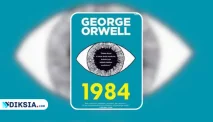Diksia.com - Are you an aspiring author who dreams of seeing your book on the prestigious New York Times Best Seller list?
Do you wonder what it takes to achieve this coveted status and how to compete with thousands of other books published every year?
If so, this article is for you. Here, we will explain what the New York Times Best Seller list is, how it works, and what you can do to increase your chances of becoming a best seller in 2023.
What is the New York Times Best Seller List?
The New York Times Best Seller list is widely considered the preeminent list of best-selling books in the United States. Since October 12, 1931, The New York Times Book Review has published the list weekly.
In the 21st century, it has evolved into multiple lists, grouped by genre and format, including fiction and nonfiction, hardcover, paperback and electronic.
The list is based on a proprietary method that uses sales figures, other data and internal guidelines that are unpublished, how the Times compiles the list is a trade secret.
In 1983 (as part of a legal argument), the Times stated that the list is not mathematically objective but rather editorial content. In 2017, a Times representative said that the goal is that the lists reflect authentic best sellers.
The list has been a source of controversy. When the Times believes a book has reached the list in a suspicious way such as through bulk purchases the book’s entry on the list is marked with a dagger symbol.
How Does the New York Times Best Seller List Work?
The New York Times does not reveal the exact criteria or methodology for selecting and ranking the best-selling books on its list. However, some general information is available from various sources.
According to The New York Times website, the list is based on “weekly sales reports obtained from selected samples of independent and chain bookstores and wholesalers throughout the United States”.
The sales figures are confidential and are not disclosed to the public or to the publishers. The samples are chosen randomly and represent a cross-section of booksellers across the country. The number of reporting outlets varies from week to week, but usually ranges from 750 to 950.






